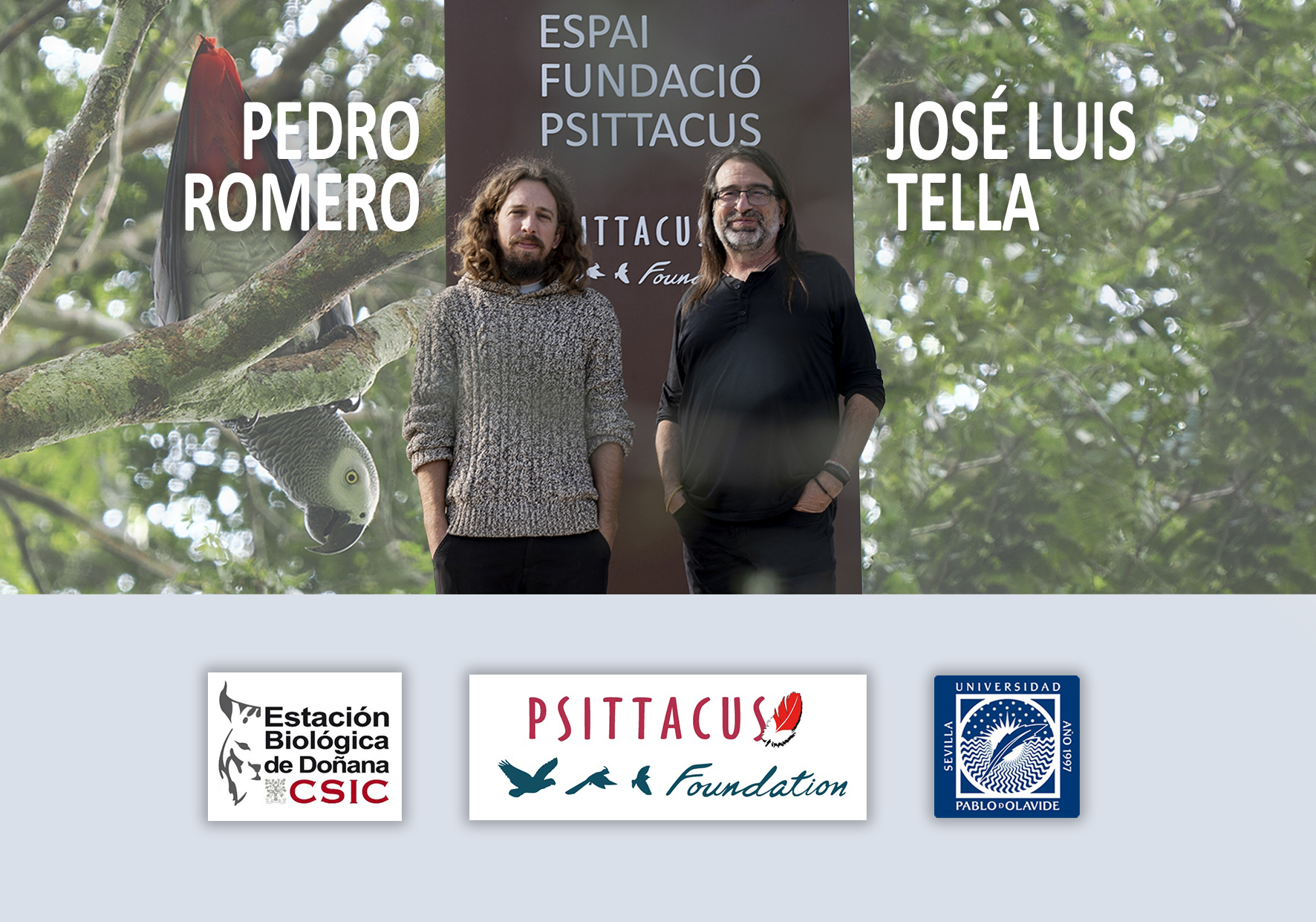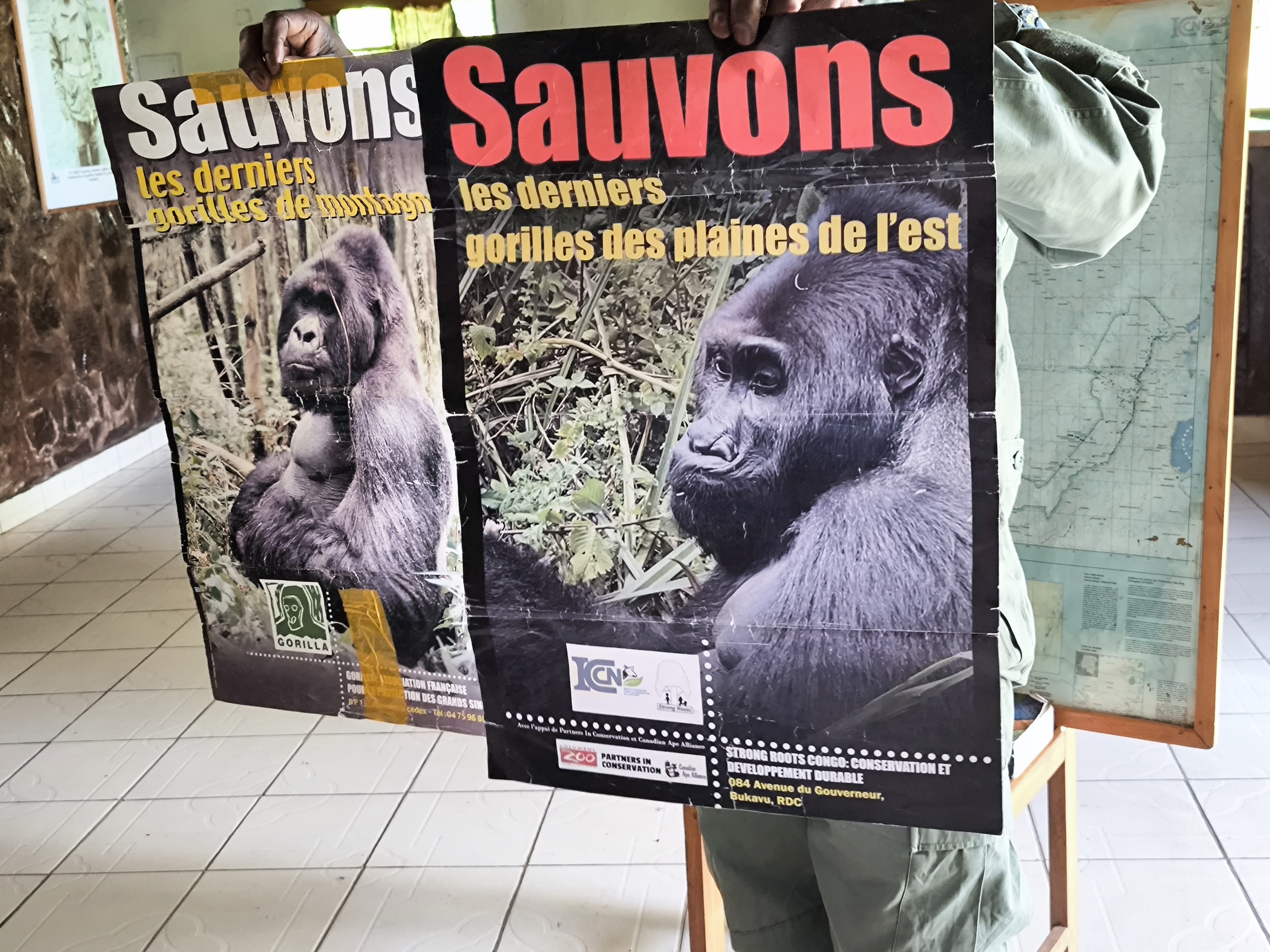We use cookies with an analytical purpose. You can either configure or reject the cookies by clicking on "Cookies configuration". You can also accept all the cookies clicking on "Accept all cookies". For more information you can visit our Cookies Policy.
Accept all cookiesScientific expedition in the DR Congo: Challenges to the survival of the African Grey Parrot. Part 2

In the previous post on this blog, we shared the expedition that a team of researchers from the Doñana Biological Station conducted in the Democratic Republic of the Congo (DRC) between October and November 2024, thanks to funding from the Psittacus Foundation. The aim of the expedition was to assess the population density of the African Grey Parrot, a critically endangered species, and to document the threats it faces in its natural habitat. In this second part, we look at the researchers’ reflections on their findings and explore key issues related to wildlife conservation in the DRC.
Throughout the programme, the researchers will answer a series of questions about the differences and similarities they have observed between their previous studies in the Neotropics and those conducted in the DRC. They will address the complexities that each region presents in terms of conservation, as well as the specific challenges in the DRC, including political and social factors that have a direct impact on efforts to protect endangered species.

This time they will also reflect on the crucial role played by wildlife rehabilitation centres in the DRC, such as the Lwiro Wildlife Rehabilitation Centre. The researchers will explain how these centres contribute to the recovery of species and raise the awareness of local communities about the importance of conservation.

The programme will also discuss the strategy for reintroducing the African Grey Parrot into its natural habitat. Researchers will share their insights into the opportunities and challenges of this strategy, considering the factors that influence the success of reintroductions in such a fragile environment.
Finally, the role of well-managed captive breeding centres as a conservation tool and a means of preserving genetic heritage is discussed.

Don’t miss this fascinating episode of Psittacus Live, an in-depth look at the
complex challenges of conserving the African Grey Parrot and other species in
one of the most biodiverse and threatened regions on the planet.
Dr José Luis Tella Escobedo: Research Professor at the Doñana Biological Station. He has extensive experience in conservation biology and has focused his studies on various aspects of avian ecology. In recent years, he has devoted considerable effort to understanding the extent of the illegal parrot trade in the Neotropics and its impact on ecosystems due to the loss of ecological functions of this group of birds.
Dr Pedro Romero Vida: Postdoctoral researcher at the Doñana Biological Station. His research is based on various aspects of the illegal parrot trade in the Neotropics, focusing on the impact of this human activity on one of the world’s most endangered bird groups. His research also covers other ecological aspects, such as the impact that their disappearance can have on ecosystems through the loss of ecological functions, or the effects of their introduction outside their native habitats.